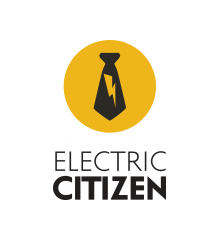Developers, designers, and clients alike should be data advocates, because in today’s age it is plentiful and an important precursor to successful website redesigns.
Just like stereotypes can misrepresent reality, best practices can misrepresent what actually works for *your* particular site redesign. Be an advocate for archetypes (data-backed) over stereotypes (your own opinion). Whenever possible, favor data-informed decision making over “best practices”, egos, and the latest idea your boss dreamed up. Of course data is only as useful as the insights you draw from it, but why not look at it rather than ignore it, before spending your client’s dollars and putting your relationship with them on the line. Perfection does not exist in web design, but practicing data analysis can sure make things better.
Drupal is a highly customizable, data-friendly platform, so let’s take a look at how we can use data for a better redesign, a better experience, and better KPIs and end results!
--
About the author: Seth Viebrock is Founder and CEO of Origin Eight, a Drupal and WordPress web design and digital marketing optimization agency based in Minneapolis.
Here are some data concepts and sources we will cover, which can inform a successful redesign:
__Data-driven personas__
* What’s the difference between a stereotype (an inference based on personal experience) and an archetype (based on individual data points from a given demographic)?
* What kind of data sources are available to support and build these personas?
__Persuasive data__
* Your new redesign touts that this business/organization/institution can deliver a product or a set of promises…but what supporting data do you have to “prove” this to the end-users, and what does this mean when planning your data structures / content types?
* How do you leverage and position testimonials, data-driven badges, and other “social proof”, as well as data from authority, liking, and scarcity (there are only X seats left to see this presentation!).
__User-centric, data-driven UX/Usability__
* The main goal of usability from your client’s perspective is more profit (or a similar KPI). How does something as simple as the prioritization of content on a page equate to profit?
* What data exists right now that you can look at and use, without heading into a usability lab?
* How does this data solve for the “ego problem” of web design?
* Some of this data only takes a few minutes of your time – learn a few tips and tricks, too.
__What data do you have on the end-user?__
* Are there valuable opportunities for personalization of website content, even if it’s just the weather, referrer, or country of origin? Why would that matter?
__ Data-driven copywriting__
* So your client wants a website, but all websites need copy. Learn about what kind of data can inform copy-first design, even if it’s not always realistic, and at least think about what kind of data you or the client can collect to inform the usage of space on the page.
__Analytics__
* Simple tricks for evaluating website performance in analytics (i.e. detecting a bug in Chrome without ever looking at the page, based on user completion of page goals), how to set your website and client up for success, and how to continuously improve.







